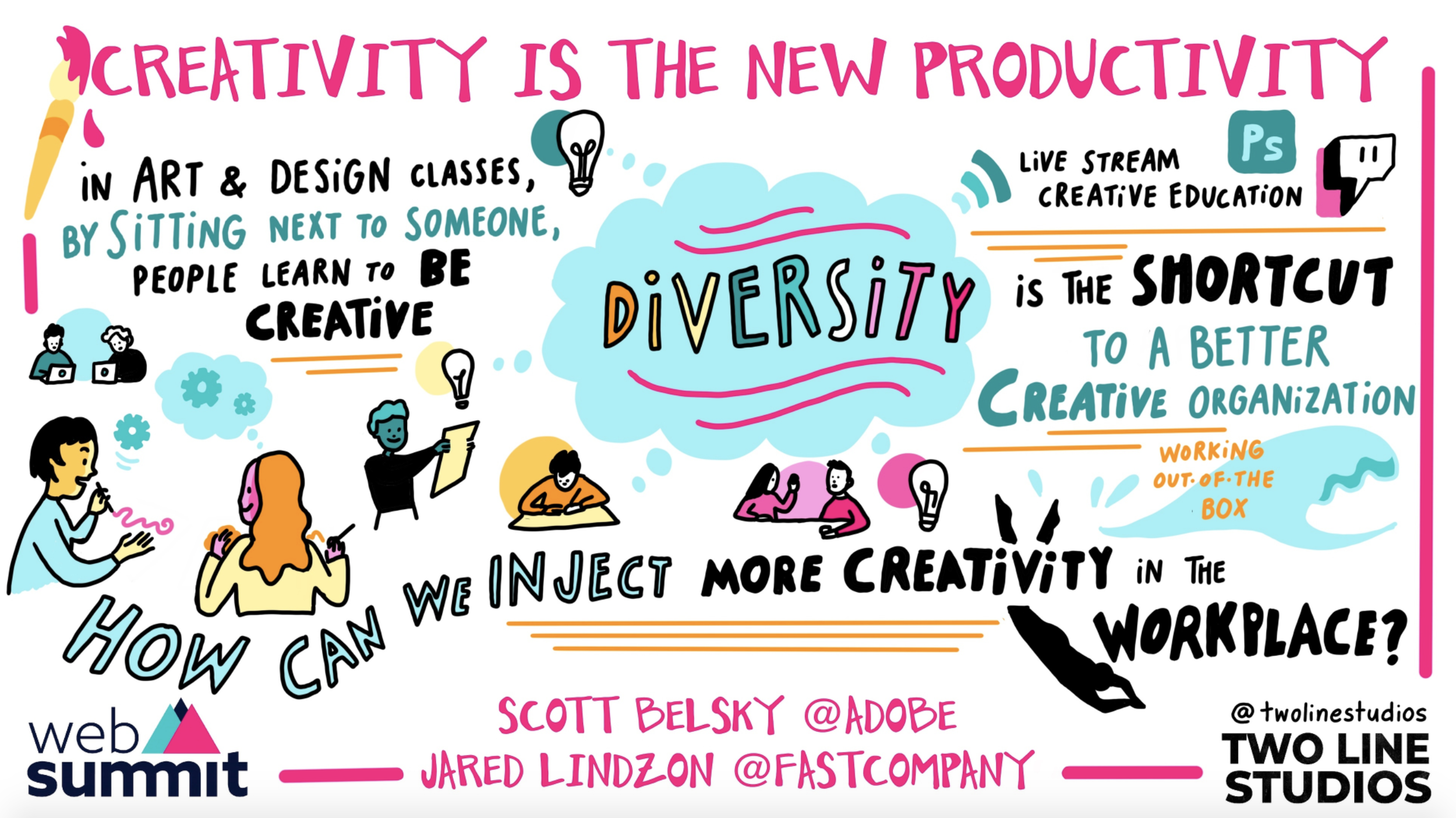How Visuals Make Content More Memorable | TwoLine Studios
Does visual content make information more memorable?
TwoLine Studios Founder, Heather Willems, graphic recording at a Constellation’s Connected Enterprise conference
It is intuitive to believe visuals do support the memorability of information. According to Harvard Medical School, visuals help people effectively process information while keeping them engaged for longer periods of time. Utilizing strong visual content, like graphic recording, encourages the engagement and memory of audiences.
Over the years, the TwoLine Studios team has graphically recorded at hundreds of conferences. We have captured the presentations and panel discussions of thousands of speakers. By capturing the content as a visual story in both words and images, we have witnessed the power of visualization as a memory tool.
Constellations Connected Enterprise visual notes
Jim Kwik is a speaker, author, and memory guru. He states that “The mind doesn’t know the difference between a vivid imagination and reality.” To contextualize this statement, think about waking up from a nightmare. Your heart is pounding and your hands are sweating from the vivid scenario your imagination just constructed in your mind, everything felt real. This is an example of the intersection between vivid imaginations and reality that we experience firsthand.
To learn more about how to make your next conference unforgettable click the button below.
Visualization is a powerful tool that increases your memory retention and makes imagined ideas feel like reality. To elaborate on this concept, let’s turn to some scientific studies that caught our attention. The first study was conducted at Harvard in 1967. Participants in the study saw 600 random images. Afterward, subjects were presented with a series of paired images. One image was from the set they’d already seen, and the other was a new image they had not seen. Subjects in the study were able to identify the picture they had already seen with 98 percent accuracy.
A few years later, the University of Rochester in New York conducted another study surrounding the same topic of memory retention and imagined ideas feeling like reality. Participants were shown a set of 2,500 images for 10 seconds each. They were then shown a series of paired images and asked to identify the one they’d already seen. Again, just like the first test, participants could correctly identify an average of 2,000 pictures. The researchers found they could show participants images for as little as one second at a time, and participants could still identify the pictures they had already seen up to three days afterward. These studies examine the power that visualization holds in both memory retention and our imaginations.
Web Summit digital graphic recording with Scott Belsky and Jared Lindzon
Do you want your message to stick to your audience’s brain? Using graphic recording to draw up big ideas is an effective tool for audiences to remember your content. Here are some tips in the form of an acronym for enhancing your visualizations and making memories stick.
A – Action. Visualize your idea in action.
E – Emotion. Load your ideas with emotional or exaggerated feelings.
I – Illustrated. Draw out your picture to make it tangible.
O – Ordinary to Extraordinary. Make your concept bigger than life.
U – Unusual. Connect a visual image to your idea that is unique and unusual. This will make your content more unforgettable.
To learn more about graphic recording click the button below.
The TwoLine team has been helping brands communicate virtually for nearly 15 years. Our facilitator-led sessions implement a Clarity Through Creativity®™ approach using visuals, storytelling, and creative inspiration — even when getting together in person is not possible.
Subscribe to our newsletter below for more fresh perspectives.



